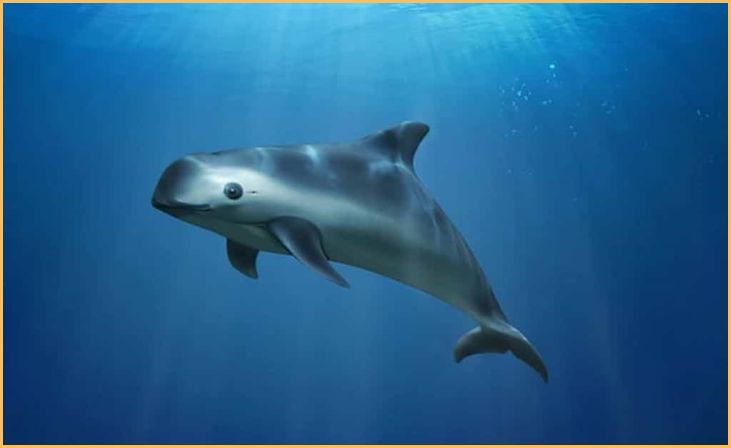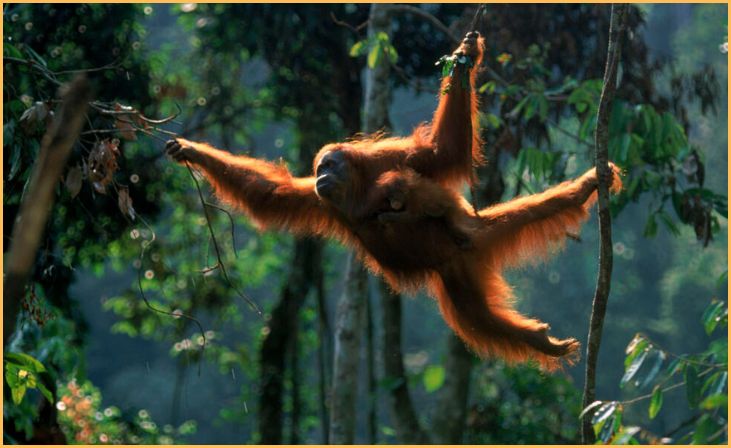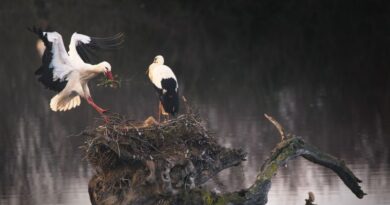Rarest Animals in the World – The world’s rarest animals embody a fragile tapestry of biodiversity, facing the ominous threat of extinction due to various human-induced factors. Rarity, in this context, encapsulates not only the small population size and restricted geographic range but also the unique ecological niches and behaviors that define these extraordinary creatures. As stewards of the planet, understanding the importance of preserving these species becomes imperative.
This outline navigates through the exceptional realms of land, marine, avian, and invertebrate life, shedding light on the plight of species such as the vaquita, Javan rhino, baiji, kakapo, and others.
By exploring their habitats, challenges, and ongoing conservation initiatives, we aim to underscore the urgency of collective action to safeguard these irreplaceable components of our natural heritage.
Rarest Animals in the World
Vaquita (Phocoena sinus)

The vaquita (Phocoena sinus) is a critically endangered porpoise inhabiting the Gulf of California. With fewer than 10 individuals remaining, it holds the unfortunate title of the world’s most endangered cetacean.
The primary threat to the vaquita is illegal gillnet fishing for another endangered species, the totoaba fish. Vaquitas often become entangled in these nets, leading to a drastic population decline.
Conservation efforts focus on enforcing fishing regulations, combating illegal wildlife trade, and promoting sustainable practices to safeguard the vaquita from imminent extinction.
Also, Read – Small Animals That Make Fantastic Pets
Javan Rhino (Rhinoceros sondaicus)
The Javan rhinoceros (Rhinoceros sondaicus) is a critically endangered rhino species native to Java, Indonesia. Facing severe threats from habitat loss and poaching, it is one of the rarest large mammals globally.
The Ujung Kulon National Park shelters the last remaining population of Javan rhinos. With an extremely low number, estimated to be fewer than 80 individuals, urgent conservation measures are crucial for their survival.
Efforts include habitat protection, anti-poaching initiatives, and community engagement to ensure the preservation of this ancient species on the brink of extinction.
Northern White Rhino (Ceratotherium simum cottoni)
The Northern White Rhino (Ceratotherium simum cottoni) is teetering on the edge of extinction with only two known surviving individuals, both female, as of the last update. Rampant poaching for their horns and habitat loss have decimated the population.
Efforts to save the species involve advanced reproductive technologies, including in vitro fertilization, to artificially inseminate the remaining females. Scientists and conservationists are working tirelessly to create a genetic reservoir and, hopefully, revive the population.
The situation highlights the urgent need for global cooperation and conservation initiatives to prevent the complete loss of this majestic rhinoceros subspecies.
Sumatran Orangutan (Pongo abelii)

The Sumatran Orangutan (Pongo abelii) is a critically endangered great ape species native to the rainforests of Sumatra, Indonesia. Threatened by rampant deforestation, habitat fragmentation, and illegal hunting, their population has drastically declined.
With an estimated population of fewer than 14,000 individuals, urgent conservation measures are imperative. Preservation efforts include habitat protection, reforestation initiatives, and community involvement to mitigate human-wildlife conflict.
The Sumatran Orangutan faces an uncertain future, emphasizing the importance of sustained conservation endeavors to safeguard their habitats and ensure the survival of this unique and intelligent primate species.
Kakapo (Strigops habroptilus)
The Kakapo (Strigops habroptilus), also known as the night parrot or owl parrot, is a critically endangered, nocturnal, and flightless parrot native to New Zealand. With only around 200 individuals remaining, it stands as one of the rarest birds globally.
The Kakapo faces threats from introduced predators and habitat loss. Conservation efforts include habitat restoration, predator control, and a unique breeding program.
Notably, Kakapos are known for their distinctive appearance, friendly demeanor, and the fact that they are the heaviest parrot species. Their survival hinges on intensive conservation initiatives aimed at protecting their habitat and ensuring successful breeding outcomes.
Also, Read – Heaviest Animals Freely Roaming England
Amur Leopard (Panthera pardus orientalis)
The Amur Leopard (Panthera pardus orientalis) is a critically endangered big cat native to the forests of the Russian Far East and parts of China. With only around 100 individuals left in the wild, it ranks as one of the rarest and most endangered leopard subspecies.
Threats include habitat loss, poaching for their beautiful fur, and depletion of prey species. Conservation efforts involve habitat protection, anti-poaching measures, and community involvement.
The Amur Leopard’s survival is crucial for maintaining the biodiversity of its habitat, and concerted global efforts are underway to secure a future for this majestic and elusive feline.
Hawksbill Turtle (Eretmochelys imbricata)

The Hawksbill Turtle (Eretmochelys imbricata) is a critically endangered sea turtle species found in tropical oceans. Recognized for its distinctive, overlapping shell plates and pointed beak, it plays a vital role in coral reef ecosystems by controlling sponge populations.
However, the Hawksbill faces severe threats, including habitat loss, climate change impacts on nesting sites, and illegal trade of its beautiful shell known as “tortoiseshell.”
Conservation efforts involve protecting nesting sites, implementing sustainable fishing practices, and combating the illegal trade. Preserving the Hawksbill Turtle is essential for maintaining the health of coral reefs and the overall balance of marine ecosystems.
Conclusion
In conclusion, the fate of the world’s rarest animals hangs in a delicate balance, echoing the broader challenges of biodiversity loss. As we navigate the intricacies of conservation, a united effort is crucial.
By amplifying awareness, fostering global cooperation, and implementing sustainable practices, we can tip the scales towards a future where these extraordinary species not only survive but thrive.
The responsibility lies with us to ensure that the legacy of these unique creatures endures, inspiring generations to come and underscoring the interconnectedness of all life on Earth.
FAQs
Rare animals play crucial roles in maintaining ecosystem balance. Their loss can disrupt food chains and lead to cascading ecological impacts. Additionally, preserving biodiversity contributes to the resilience of ecosystems and helps in scientific research and medical advancements.
Habitat destruction, pollution, climate change, illegal wildlife trade, and hunting are significant human-induced threats to rare animals. These activities reduce their available habitats, disrupt ecosystems, and directly harm populations.
Conservation efforts often include habitat protection, captive breeding programs, community involvement, and international cooperation. Many organizations work towards raising awareness, implementing strict regulations, and developing sustainable practices to ensure the survival of rare species.






